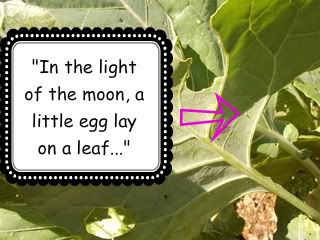
Proverbs 6:6-8
Go to the ant, O sluggard; consider her ways, and be wise. Without having any chief, officer, or ruler, she prepares her bread in summer and gathers her food in harvest.
Over the years I've had many people ask me questions about canning. I did this write up several years ago to summarize the process for someone who is interested in getting started. I taught myself how to do this by reading books. If I can do it, you can do it!
I'm planning to post some canning recipes in the coming weeks, including, my salsa recipe, how to do crushed tomatoes, and apple pie filling. I typically do jam earlier in the year, but I'm happy to share those recipes too. Got any requests?
- - - - - - - - - - - - - - - - - - - - - - - - - -
First off, if you just want to dabble in making some jam or making some salsa, then my instructions should be sufficient. If you are serious about learning the whys and what-fors, then I strongly recommend purchasing the
Ball Blue Book of Preserving. You can find it at Wal-mart for less than $10 and it should be at any library. It has detailed instructions, recipes, and step-by-step pictures for dummies like myself! In fact, almost all of the equipment I discuss can be found at Wal-mart, some grocery stores, and many hardware stores.
Secondly, ANYBODY can learn to do this! I taught myself just from reading books, and it is very simple and enjoyable. A gift of homemade jam, salsa, or even vegetables is always well received!
Third, canning is a very scientific process. If you are a cook like me that likes to dabble around and change half the recipe, you must restrain yourself when you are preparing foods for canning. Changing the amount of sugar, vinegar, lemon juice, etc... in a recipe must never be done! It is pretty safe to dabble with amounts of salt and spices, but leave any main ingredient alone! Also, if a recipe gives guidelines for peeling, chopping, pureeing, etc... you must follow these instructions. Any changes you make can affect the processing and can result in failure and unsafe food. So, basically: FOLLOW THE DIRECTIONS! :)
Fourth, make sure you have plenty of time to prepare your foods, and to process them. You don't want to be hurried through this, and sometimes things will take much longer than you expect. If you've never done a canning project before, devote an entire morning or afternoon to it. With Littles, I do canning after they are put down for bed and Preacher Man is there to jump in to take care of them if they wake up. After you prepare the recipe, the filling and processing of the jars MUST immediately follow.
Fifth, HAVE FUN and don't get too stressed out about it!
- - - - - - - - - - - - - - - - - - - - - - - - - -
HOME CANNING BASICS -
TWO METHODS: (all recipes should specify which method to use)
1) Steam Pressure Method: Requires the use of a
pressure canner, which is an expensive piece of equipment. If you don't have one, check around, maybe some ladies at church would let you borrow theirs. Steam pressure canning is for low-acid foods, including almost all vegetables. The steam pressure is needed to raise temperatures high enough to kill all of the bacteria and toxins. I will not be posting any steam pressure recipes here. If you wish to try canning vegetables, I would carefully read your instruction book for your pressure canner, and check out the Ball Blue Book for more info.
2) Water Bath Method: Used for high-acid foods, including most fruits, tomatoes, and anything in a vinegar brine, such as pickles or sauerkraut. A
water bath canner is actually pretty inexpensive. It's a large pot that comes with a rack that holds the jars. They are generally available in pint and quart sizes. Unless you have a large family, a pint processor is all you should need. Sometimes you can find these at garage sales.
Note for dummies like me: don't try to process quart size jars in a pint size canner. To make them fit you have to remove the rack and have the jar sitting in direct contact with the bottom of the pot, which causes jar explosion. Don't make my mistake!
You *can* use a large stock pot for canning if you are careful to have a folded up kitchen towel at the bottom of the pot that keeps the jars from coming into direct contact with the base of the pot. You will also want to make sure your pot is deep enough that you can cover the jars with with water.
EQUIPMENT: In addition to a canner, you'll need...
Stuff you probably have around your kitchen -
- a stockpot or two to prepare food for canning
- a pair of tongs (helpful in removing jars and lids from the canner)
- a wet rag
- several towels to set hot jars upon
- a plastic spatula
- a potato masher helps preparing jams and anything needing mashing
- a timer
- spoons for stirring, a ladle
Specialty, yet ESSENTIAL equipment -
-
home canning jars free of chips and cracks - jars can be cleaned and reused - I find these at garage sales frequently!
-
lids - you MUST use a new lid for every jar you process, so be sure to have plenty!
-
bands - these can be reused, just don't use any that are bent or rusty
(wash all of the above in hot, soapy water just before using)
Specialty, non-essentials -
-
jar lifter - designed to lift and carry canning jars - very handy!
-
Jar funnel - unless you want to make a terrible mess ladling food into the jars, get one, they are designed to fit inside canning jars and have a large opening
- - - - - - - - - - - - - - - - - - - - - - - - - -
Here is what you do:
STEP 1 - PREPARING JARS: In addition to washing the jars, lids, & bands, jars must be heated for 10 minutes just before filling. (Always put hot food into hot jars!) Submerge the jars, lids & bands in your water bath canner or in a saucepot with a towel folded in the bottom (so the jars are not in contact with the bottom of the pot). Bring the water to a simmer, keeping them simmering until you are ready to use them. (Sometimes it is handy to have a separate smaller pot to heat the lids & bands. This makes it easier to fish them out when you need them. Don't boil the water, just simmer. Boiling can cause the seals to fail.)
STEP 2 - PREPARE THE FOOD according to the recipe. (If it is going to take you a really long time to prepare the food, you can wait until you are nearly done before turning on the heat for the jars, lids & bands.)
STEP 3 - FILLING JARS: Your food is hot, your jars are hot, you're equipment is all handy, and you're ready to go! Don't get into too big of a hurry at this point. Work on one jar at a time. Remove a jar, a lid, and a band from the water bath. Put the funnel on top of the jar and fill with the specified amount of food. Recipes should all specify the amount of headspace you need to leave between the top of the food and the lid. As a general rule, leave 1 inch for low-acid foods like vegetables and meats, 1/2 inch for high acid foods like fruits and tomatoes, and 1/4 inch for juices, jams, jellies, pickles, and relishes. Use the lines on the outside of the jar to help you measure. Take care not to fill the jar too full, and make sure that you've also got it full enough - remember it's an exact science! Next, you need to remove the air bubbles. Run a non-metallic spatula or a plastic knife inside the jar between the food and the side of the jar, pressing back against the food to release trapped air. Add more liquid if needed to have the proper headspace. Next, wipe around the rim of the jar with your damp cloth and make sure it is clean so you can get a good seal. Set the lid on top, and screw on the band just until it is firm and snug, but not too tight. Using the jar lifter if you have one, place the jar onto the canner rack in the canner. Repeat this process until you have prepared all of the jars.
STEP 4 - PROCESSING JARS: Lower the rack into the boiling water and make sure all of the jars are covered with a least 1 inch of water and put the lid on the canner. Bring the heat up to medium-high, and when the water comes to a full, rolling boil, start the timer for as long as the recipe specifies. After the time is up, turn off the heat, and remove the canner lid. Let the canner cool for 5 minutes and then remove jars. Set the jars upright on a towel or cutting board to cool, leaving space between the jars for air to circulate. Do not tighten the bands further. Let the jars cool naturally for 12 to 24 hours. You will hear a "ping" sound when each lid seals! This is a good sign! After 12 hours, if you tap on the top of the lid and it does not give, then it has a good seal.
If you have a jar that did not seal, you can 1) go through the process again and take better care this time 2) put it in the fridge and use the jar first
STEP 4 - STORING JARS: Your jars can be stored for up to one year in a cool, dark place, such as a cabinet or basement. The ideal temperature range is 50*-70*. Label the jars with the type of food canned as well as the date. Before storing the food, you can remove the bands for other use. Enjoy the bounty of the harvest for the rest of the year!









































